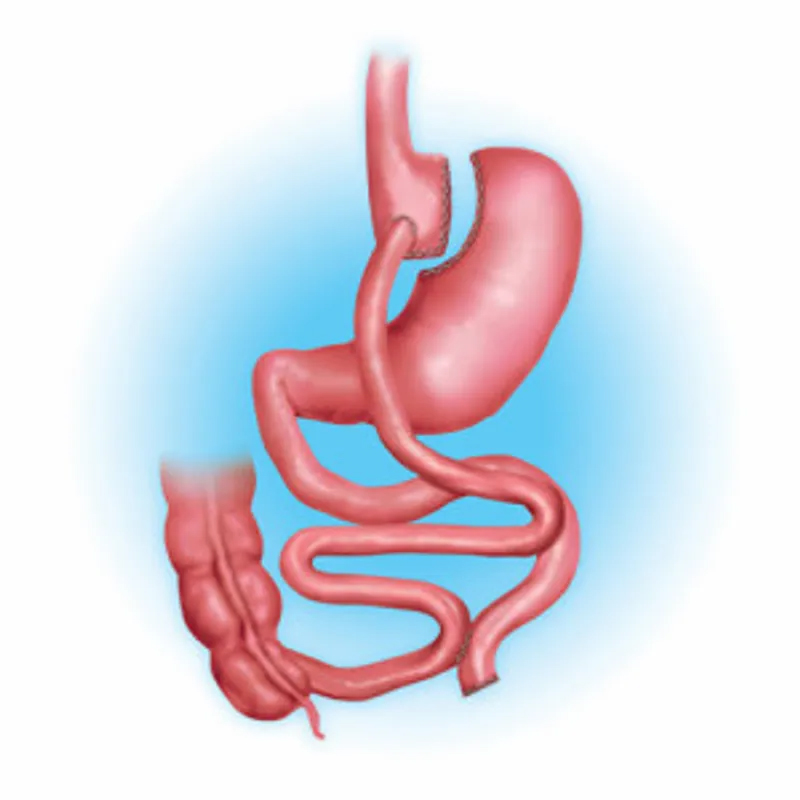Gastric bypass combines a maximum long-term weight loss procedure with all the benefits of laparoscopic surgery. The procedure is performed with a state-of-the-art imaging and tiny keyhole incisions and the operation is usually completed in about two hours. During Roux-en-Y gastric bypass surgery, the stomach is cut into two sections – a small, thumb-sized pouch (the new stomach) for receiving food, and a larger, lower section. The small intestine is then carefully measured and cut, and the lower part is connected to the new stomach. This new arrangement bypasses the larger segment of the stomach and the first portion of the small intestine. This allows you to eat very small food portions without the feelings of hunger or craving usually associated with food restriction.
Gastric bypass is a common type of weight loss surgery. Most people lose 70 to 80 percent of their excess weight in the first 12 to 24 months. Even more dramatic, a 1999 study followed 500 patients who had undergone laparoscopic gastric bypass surgery. The study found that after five years of follow-up, the average excess body weight loss remained impressively high at 77%. In other words, patients lost their excess weight and kept it off. These results have been verified in more recent studies. Gastric bypass patients are more satisfied with life after losing weight.
Though recovery times may vary, our average hospital length of stay is slightly less than 48 hours.
References: 1. Wittgrove AC, Clark GW: Laparoscopic Gastric Bypass: A five-year prospective study of 500 patients followed from 3 to 60 months. Obesity Surgery 9: 123-143, 1999. 2. White S, et al. Long-term outcomes after gastric bypass. Obesity Surgery 15(2):155-63, 2005.


